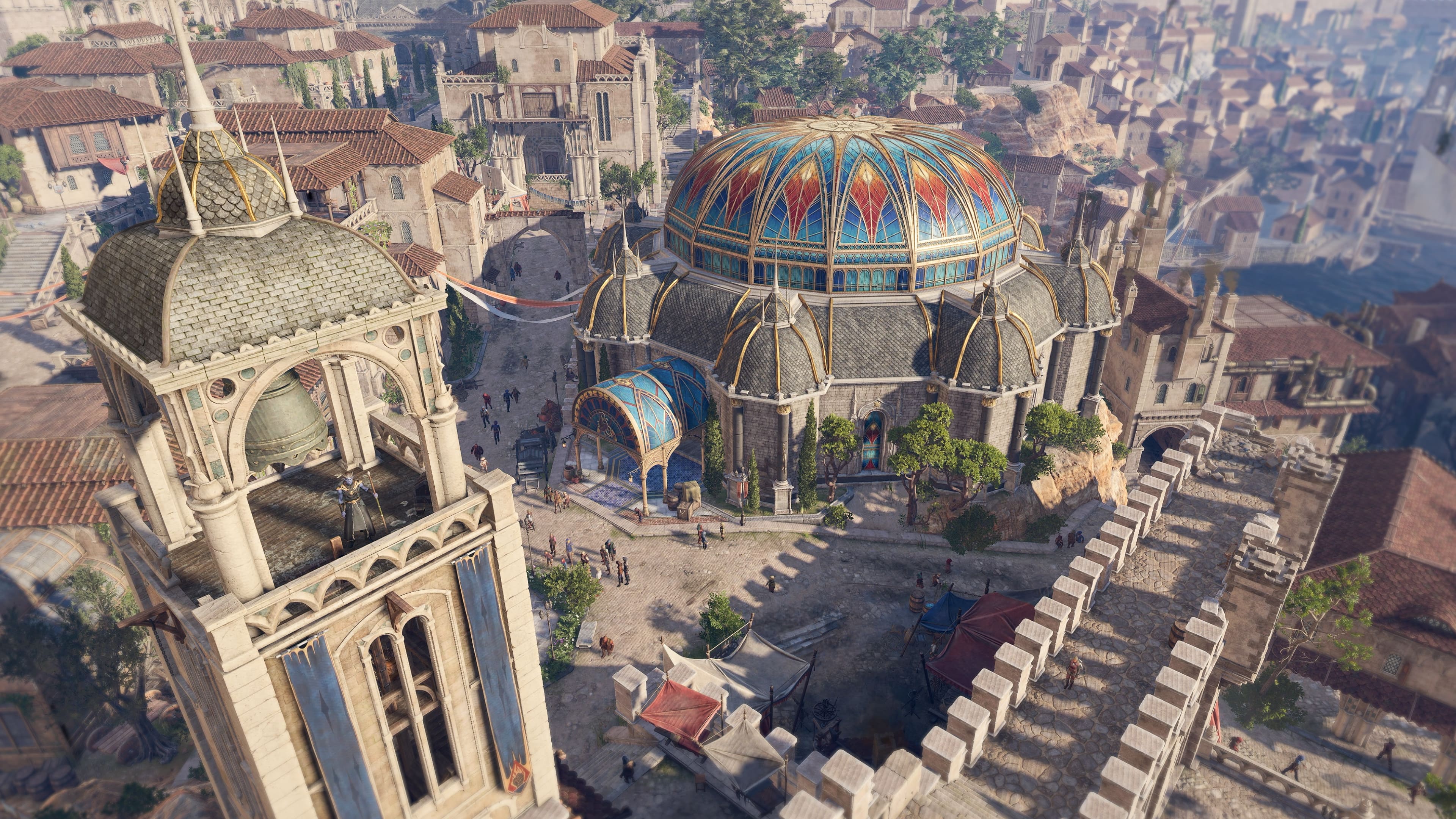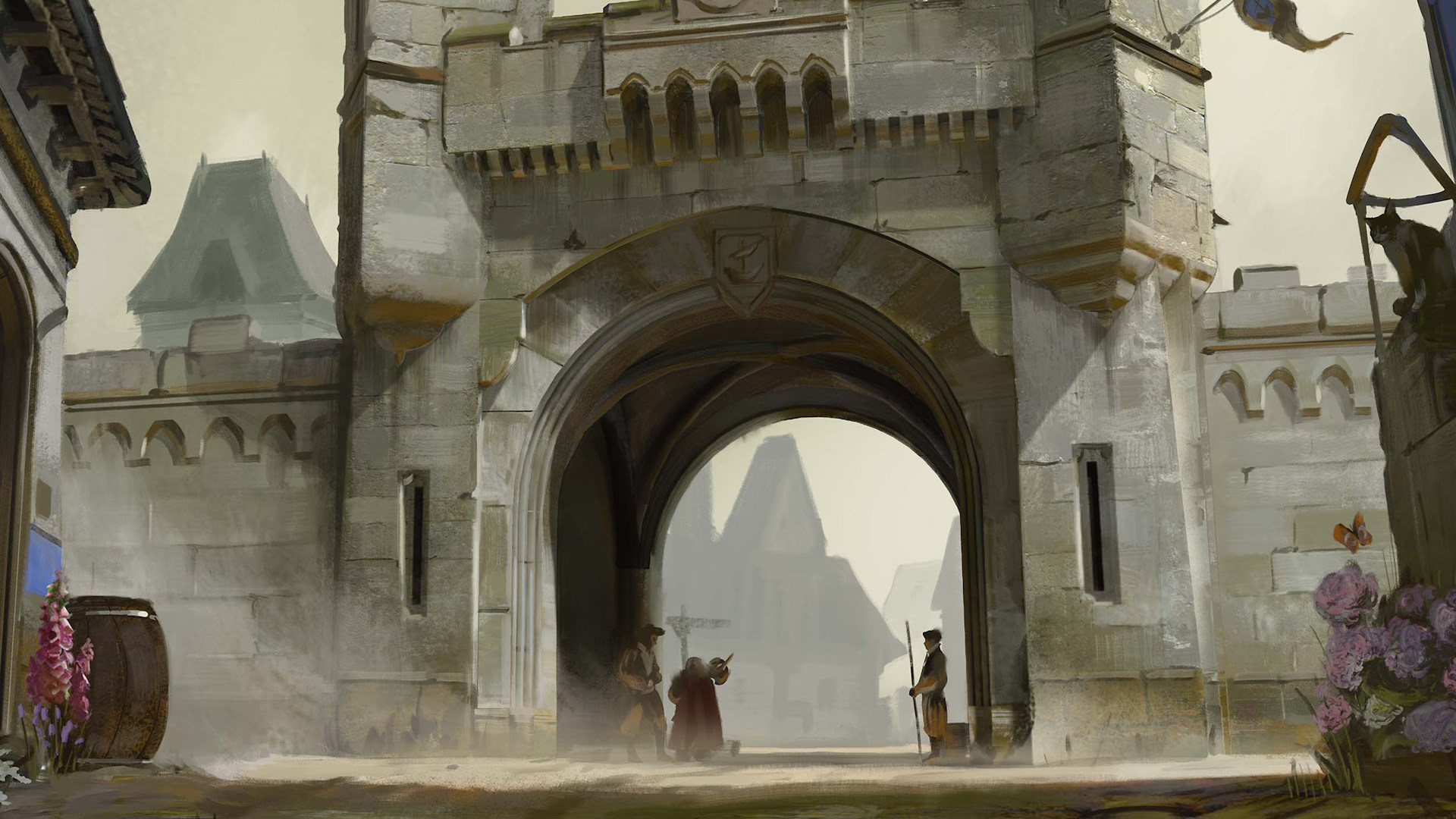9 things you should know about the city of Baldur's Gate before you start Baldur's Gate 3
The iconic city has a long history on the tabletop and in videogames, and it's full of secrets.

The release of Baldur’s Gate 3 is imminent, and if there’s a single star at the heart of Larian Studios new CRPG, it’s neither Minsc nor his size-defying hamster Boo, but the namesake city itself. The metropolis where we once parlayed with thieves and sold metric tons of bandit gear to anyone who would take it is a venerable setting for a new roleplaying adventure, but how well do we really know the most famous city of the world of Faerûn? As I’ve refamiliarised myself with my old haunts, I’ve learned and remembered a variety of things that might help prepare for our return to an old and treasured city.
This will be the first time we’ve seen the videogame version of Baldur’s Gate since Dark Alliance 2

It’s been a long time since Baldur’s Gate 2: Shadows of Amn released back in 2000—and its Throne of Bhaal expansion pack in 2001—and almost as long for Baldur’s Gate itself, which last showed up in the spinoff Baldur’s Gate: Dark Alliance 2 in 2004. While nearly two decades is a long time, and a whole lot has changed in the world of videogames, in the world of Faerûn it’s been a lot longer. In total, over 120 years have passed since the events of Baldur’s Gate 2, and thanks to the sudden appearance of mind flayers and dragons, the city is in turmoil.
Honestly, though, turmoil might be its natural state—after all, when we last saw it in Dark Alliance 2, it was in the midst of a zombie apocalypse.
Baldur’s Gate is located on the Sword Coast, a region with serious PC game history
A stretch of coast along the Sea of Swords, the Sword Coast is home to some powerful cities that have a loose coalition called the Lords’ Alliance. The Baldur’s Gate series rambled all over the Sword Coast region—especially in the Tales of the Sword Coast expansion—but there have been other iconic PC games set in the region.
The city of Neverwinter was host to both Neverwinter Nights games from the teams at Bioware and Obsidian, each of which was renowned for the custom tool sets they provided. Many budding dungeon masters will remember fondly long hours spent creating their own campaigns in the game for others to be subjected to. It was also a major location in the recent D&D film, Honor Among Thieves.
Reaching back even further to the dawn of the PC, 1991’s Eye of the Beholder from Westwood (yes, the same Westwood that would release Command & Conquer four years later) was set under the city of Waterdeep. Nicknamed the ‘city of splendors’, Waterdeep is the most powerful city on the Sword Coast and the loudest voice in the Lords’ Alliance, which is pretty impressive for a city that sounds like it was named by a forgetful and extremely literal sea captain. There’s also Lords of Waterdeep, which is often ranked as one of the best board games, if that’s more your speed.
Baldur’s Gate was founded by an explorer named Balduran who built a wall
As goofy as it sounds, the name of the founder is Balduran and not simply Baldur. I think Balduran’s Gate rolls off the tongue just fine, but I guess I'm not the one in charge of naming D&D cities. The original settlements in the area were Gray Harbor, a sheltered spot to meet up for smugglers and pirates, and a village that sprung up around it named Loklee. Balduran himself was a native of the area, and made a tidy fortune as a sea explorer. Afterwards, he came back home and invested some of his plundered treasure in a proper stone wall for the settlement before disappearing on his next voyage.
Keep up to date with the most important stories and the best deals, as picked by the PC Gamer team.
As far as legacies go, a wall is nice, but a city is better.
Yes, there is actually a Baldur’s Gate inside Baldur’s Gate

There’s a tabletop D&D module that's a prequel to Baldur's Gate 3, where you try to save Baldur’s Gate’s rival city Elturel from hell
Released in September of 2019, Baldur’s Gate: Descent Into Avernus is an adventure module that takes your D&D characters to the first layer of hell and drops them into the middle of the Blood War—a kind of eternal scuffle between the demons and devils of the Nine Hells. At the center of it is Elturel, a rival city up the river from Baldur’s Gate which has been dumped unceremoniously into hell because of a rather poorly thought out deal made with a devil. It’s been described as a sort of fantasy Mad Max: Fury Road, a premise metal enough that Doomguy is probably running it for his buds right now.
The plot of the campaign also serves as a prequel to the events of Baldur’s Gate 3, though you certainly don’t have to play through it to understand the story that follows after it.
In Baldur's Gate 3, Baldur’s Gate will have a newspaper that can report on your adventures
Baldur’s Gate has had newspapers before, but Baldur’s Mouth is going to be tied into everything your adventuring party gets up to in Baldur's Gate 3. Our own Ted Litchfield (who is a single t away from an incredible D&D villain name) recently talked about just how cool it could be to have a newspaper you can strongarm. Finally, I can do an evil playthrough while keeping my good reputation…
Minsc and Boo were stuck as statues in the city for most of a century

Minsc the unhinged ranger and his squeaky hamster assistant Boo are practically the series mascots at this point, and they've had a pretty weird story after the events of Baldur’s Gate 2. The pair agreed to let themselves be turned to stone, so that they could be revived if they were ever needed again. So for over 70 years they were mistaken for just another statue inside Baldur’s Gate, until a wild magic user named Delina accidentally hit them with a spell and brought them back to life. Since then, they’ve been on numerous adventures depicted in comics in the years before Baldur’s Gate 3.
Baldur’s Gate is still (sort of) protected by the same mercenary company
While the Flaming Fist wasn’t doing so hot when we last saw them in the Baldur’s Gate 3 announcement trailer—where they mostly acted as fertilizer for the mind flayer invasion of the city—they’re still running things. Even though it’s been 120 years in Faerun since the events of the first two Baldur’s Gate games, the same mercenary group is in charge that once either helped you out or hunted you down, depending on your character's alignment. Those of you who've played Baldur’s Gate: Enhanced Edition will know the extra campaign even added a Flaming Fist companion.
Rumours persist of a massive treasure left behind by the city's founder
Way back in the Tales of the Sword Coast expansion for Baldur’s Gate 1, you could track down the wreck of the Wandering Eye, the ship that Balduran used for his exploring and recover all kinds of random artifacts, including his legendary… butter knife? While it’s unlikely his cutlery will return in Baldur's Gate 3, there have always been rumors that Balduran had plenty of money left over after building his big wall. The spiky cliffs that line the Sword Coast are called the Sword’s Teeth, and it’s been a frequent rumor inside the world of Faerun that Balduran stashed his greatest riches in the countless caves that dot the cliff faces. Maybe we'll even get to search for it…

Sarah is a contributor for PC Gamer, formerly of TechRadar Gaming. With five years of experience writing freelance for several publications, she's covered every genre imaginable and probably a few she made up. She has a passion for diversity and the way different genres can be sandboxes for creativity and emergent storytelling, and loves worldbuilding. With thousands of hours in League of Legends, Overwatch, Minecraft, and countless survival, strategy, roguelike, and RPG entries, she still finds time for offline hobbies like tabletop RPGs, wargaming, miniatures painting, and hockey.

